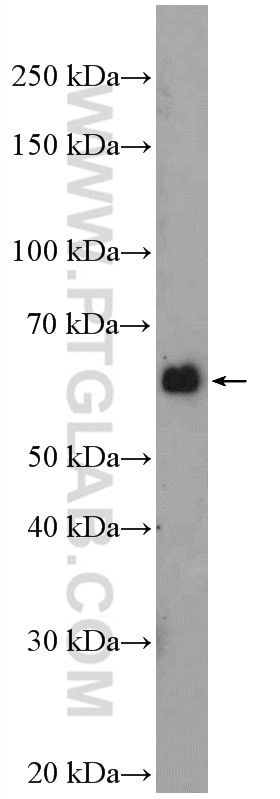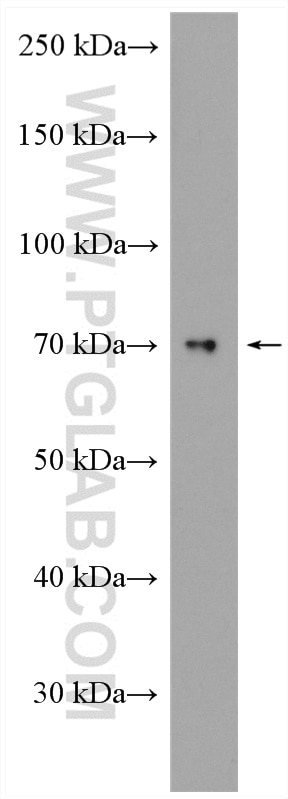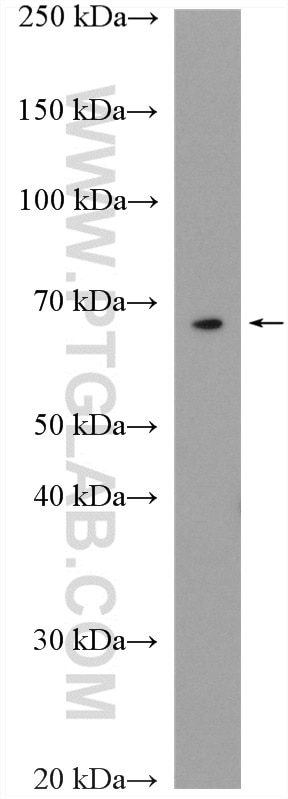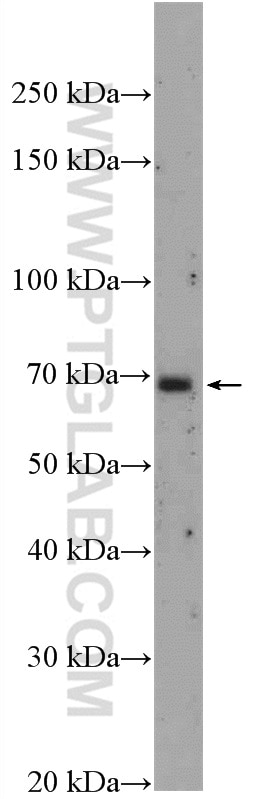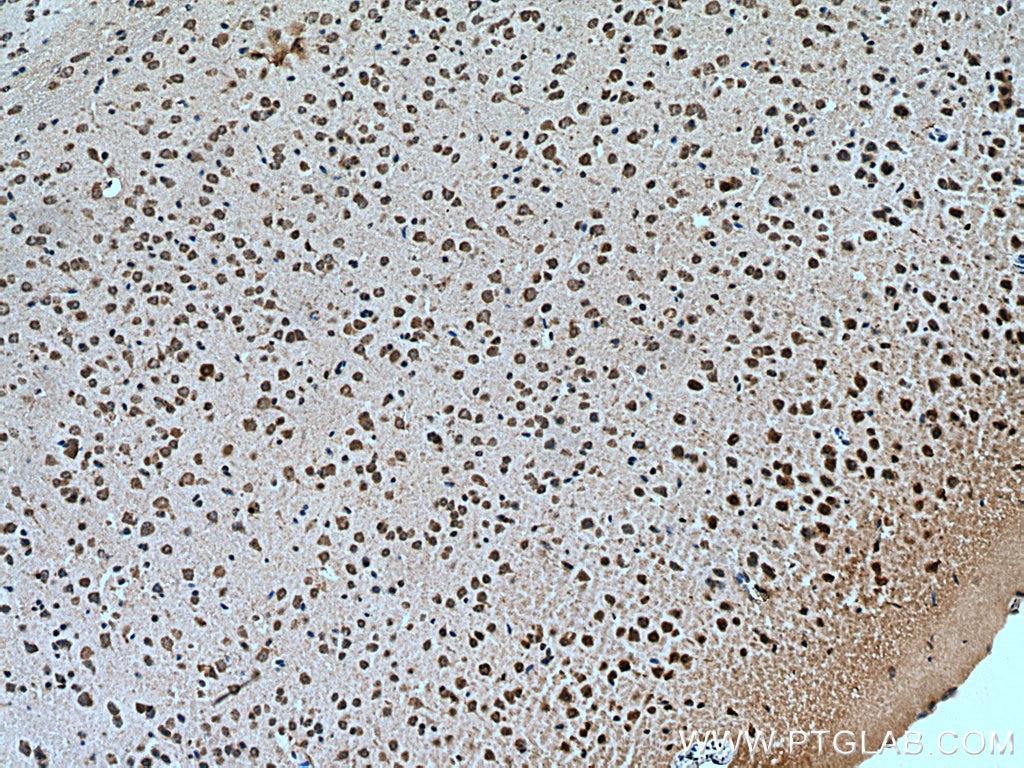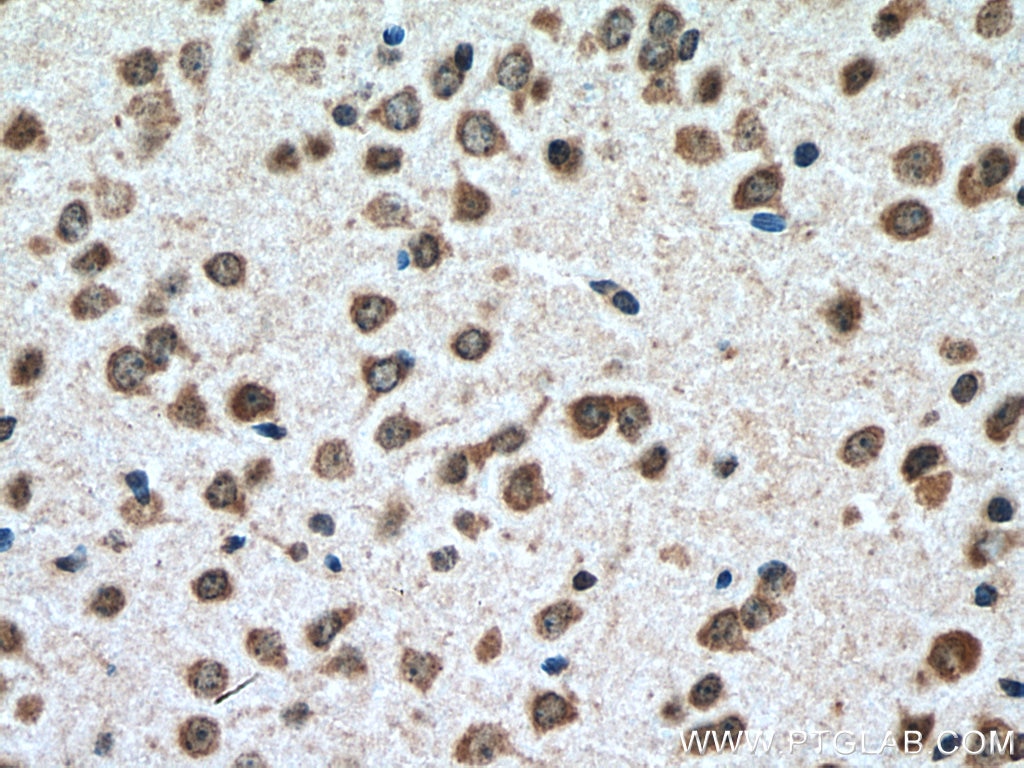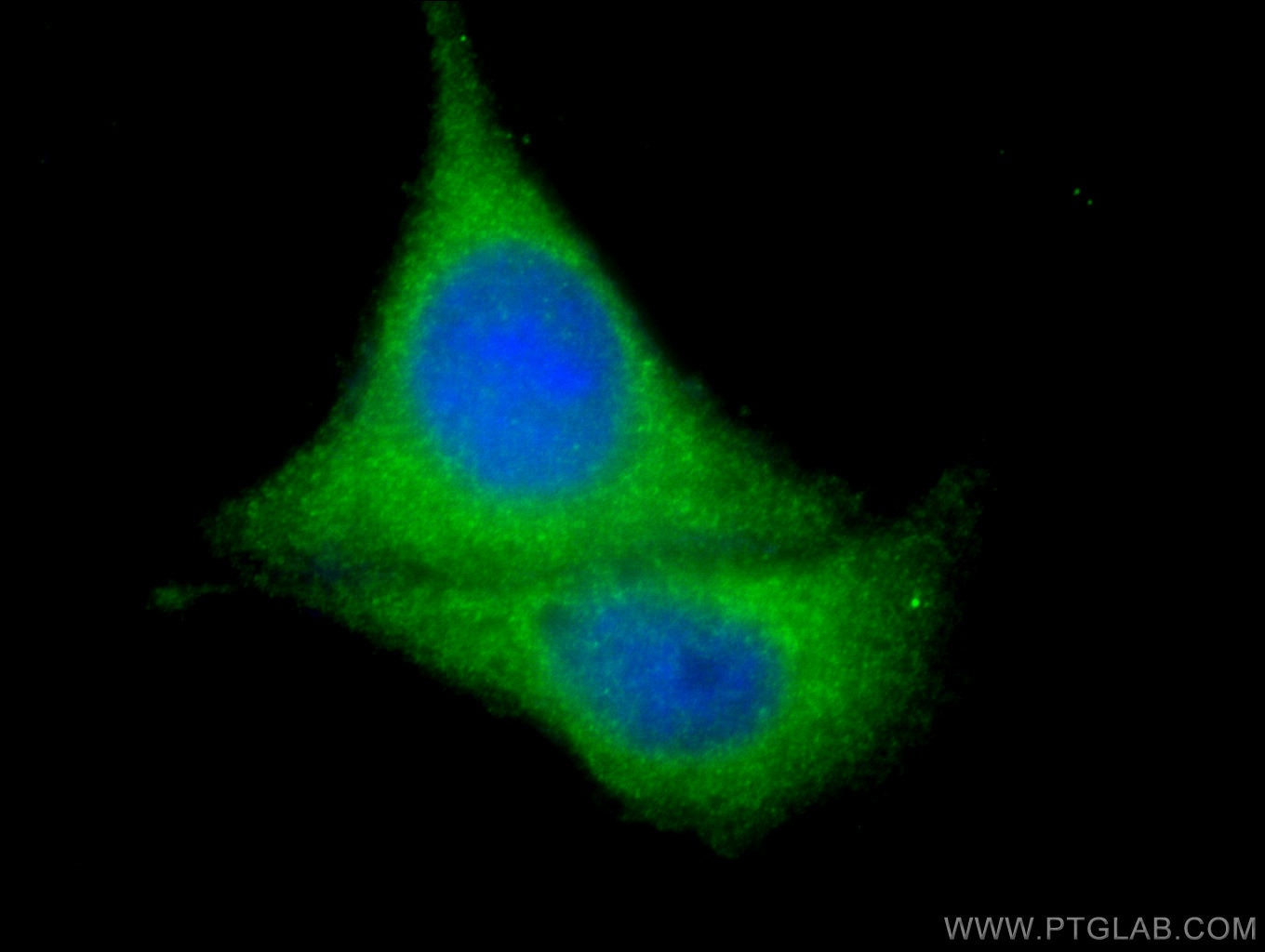- Featured Product
- KD/KO Validated
ATG14/Barkor (N-terminal) Polyklonaler Antikörper
ATG14/Barkor (N-terminal) Polyklonal Antikörper für WB, IHC, IF/ICC, ELISA
Wirt / Isotyp
Kaninchen / IgG
Getestete Reaktivität
human, Maus und mehr (4)
Anwendung
WB, IHC, IF/ICC, IP, ELISA
Konjugation
Unkonjugiert
Kat-Nr. : 19491-1-AP
Synonyme
Geprüfte Anwendungen
| Erfolgreiche Detektion in WB | HEK-293-Zellen, A431-Zellen, Maushirngewebe, NIH/3T3-Zellen |
| Erfolgreiche Detektion in IHC | Maushirngewebe Hinweis: Antigendemaskierung mit TE-Puffer pH 9,0 empfohlen. (*) Wahlweise kann die Antigendemaskierung auch mit Citratpuffer pH 6,0 erfolgen. |
| Erfolgreiche Detektion in IF/ICC | MCF-7-Zellen |
Empfohlene Verdünnung
| Anwendung | Verdünnung |
|---|---|
| Western Blot (WB) | WB : 1:500-1:1000 |
| Immunhistochemie (IHC) | IHC : 1:50-1:500 |
| Immunfluoreszenz (IF)/ICC | IF/ICC : 1:50-1:500 |
| It is recommended that this reagent should be titrated in each testing system to obtain optimal results. | |
| Sample-dependent, check data in validation data gallery | |
Veröffentlichte Anwendungen
| KD/KO | See 2 publications below |
| WB | See 35 publications below |
| IF | See 7 publications below |
| IP | See 1 publications below |
Produktinformation
19491-1-AP bindet in WB, IHC, IF/ICC, IP, ELISA ATG14/Barkor (N-terminal) und zeigt Reaktivität mit human, Maus
| Getestete Reaktivität | human, Maus |
| In Publikationen genannte Reaktivität | human, Hausschwein, Hund, Maus, Ratte, Rind |
| Wirt / Isotyp | Kaninchen / IgG |
| Klonalität | Polyklonal |
| Typ | Antikörper |
| Immunogen | Peptid |
| Vollständiger Name | KIAA0831 |
| Berechnetes Molekulargewicht | 55 kDa |
| Beobachtetes Molekulargewicht | 65-68 kDa |
| GenBank-Zugangsnummer | NM_014924 |
| Gene symbol | ATG14 |
| Gene ID (NCBI) | 22863 |
| Konjugation | Unkonjugiert |
| Form | Liquid |
| Reinigungsmethode | Antigen-Affinitätsreinigung |
| Lagerungspuffer | PBS with 0.02% sodium azide and 50% glycerol |
| Lagerungsbedingungen | Bei -20°C lagern. Nach dem Versand ein Jahr lang stabil Aliquotieren ist bei -20oC Lagerung nicht notwendig. 20ul Größen enthalten 0,1% BSA. |
Hintergrundinformationen
Barkor, also named as KIAA0831, Atg14 and Atg14L, is required for both basal and inducible autophagy. It plays a role in autophagosome formation and MAP1LC3/LC3 conjugation to phosphatidylethanolamine. Barkor promotes BECN1 translocation from the trans-Golgi network to autophagosomes. This antibody is specific to KIAA0831(Barkor).
Protokolle
| PRODUKTSPEZIFISCHE PROTOKOLLE | |
|---|---|
| WB protocol for ATG14/Barkor (N-terminal) antibody 19491-1-AP | Protokoll herunterladen |
| IHC protocol for ATG14/Barkor (N-terminal) antibody 19491-1-AP | Protokoll herunterladenl |
| IF protocol for ATG14/Barkor (N-terminal) antibody 19491-1-AP | Protokoll herunterladen |
| STANDARD-PROTOKOLLE | |
|---|---|
| Klicken Sie hier, um unsere Standardprotokolle anzuzeigen |
Publikationen
| Species | Application | Title |
|---|---|---|
Signal Transduct Target Ther Targeting CRL4 suppresses chemoresistant ovarian cancer growth by inducing mitophagy | ||
Adv Sci (Weinh) Bone Marrow Mesenchymal Stem Cell-Derived Dermcidin-Containing Migrasomes enhance LC3-Associated Phagocytosis of Pulmonary Macrophages and Protect against Post-Stroke Pneumonia | ||
Autophagy STYK1 promotes autophagy through enhancing the assembly of autophagy-specific class III phosphatidylinositol 3-kinase complex I. | ||
Dev Cell Autophagic elimination of ribosomes during spermiogenesis provides energy for flagellar motility. | ||
Autophagy Simultaneous inhibition of the ubiquitin-proteasome system and autophagy enhances apoptosis induced by ER stress aggravators in human pancreatic cancer cells. |
Rezensionen
The reviews below have been submitted by verified Proteintech customers who received an incentive for providing their feedback.
FH Charlotte (Verified Customer) (01-25-2018) | I do not think that this antibody works properly in U2OS cells. According to the litterature ATG14 is supposed to have a diffuse or punctae pattern and not this huge accumulation near the nucleus.
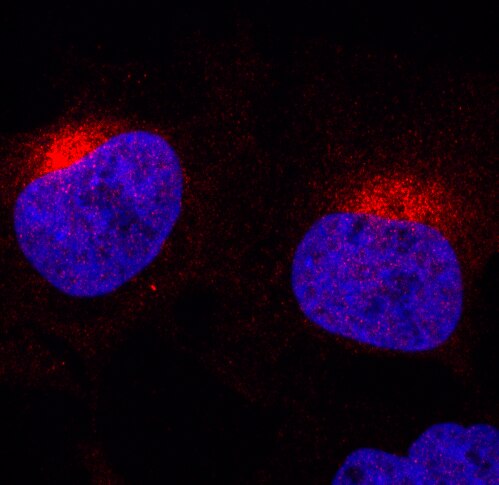 |
